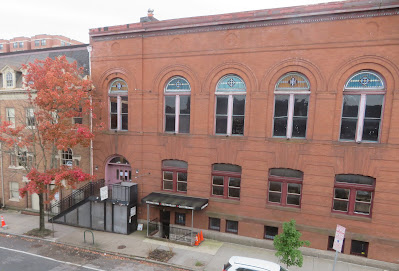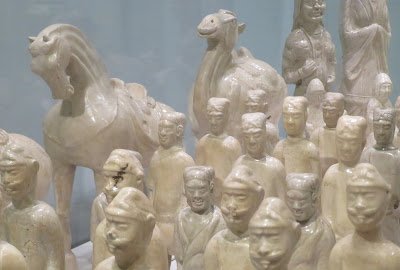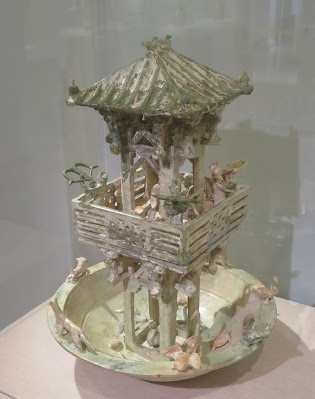This production of Dracula epitomized all of these elements in a way that was more integrated than I've even come to expect. Back to a previous statement, the unique thing about this production was that the actors also spoke dialogue. I've never experienced this at a Synetic production. I think this was because while Dracula is ubiquitous, the plot of the original novel is obscure and nuanced in it's complexity that simply could not be adequately told without dialogue. Oddly, this aspect is the one complaint I have. The actors weren't mic'ed. Even though the theater space is not huge (average auditorium size), the actor playing Dracula let several of his lines drop. And still, it is a amazing production.
Some examples of moments that just wowed me.
1) Shout out to Jacob Thomas who played the barrister Jonathan. He has a scene early one where he's mimicking riding a horse. The actions are times with sound effects and billowing costume elements from his over coat and cape. It was mesmerizing. I thought he was floating in mid-air on the back of an invisible steed.
2) There is a scene were Dracula's trio of satanic wives captures the innocent Mina in the night and carries her to their master. (The show was very sensual by comparison to others, even came with a child disclaimer). The actors playing the wives lift Mina, played by Nutsa Tediashvili, she placing her legs at the ankle on the shoulders of the one wife, and her neck with head extended on the shoulder of a second wife and then crosses the stage as if she is laying on a flat surface; stone stiff between the shoulders of the two women. She appeared to maintain her rigid body against all laws of physics and human strength without any aids. It was brief and yet breath-taking. And perhaps there was a trick involved, but I couldn't see any mechanisms at all! And...
3) In the climatic scene the actor playing Dracula, Dan Istrate, is under siege by a quintet of holy water handling, spiked silver cross bearing humans all intent on killing him in order to free Mina from his cursed blood bond. As the actors spar and parry with their props and bodies a huge black fabric rises up between Dracula and his assailants. The pitched battle continues, but the form of Dracula suddenly becomes spectre-like experienced only through the body fitted black fabric. It was another jaw dropping example of the sort of magic that Synetic Theatre creates.
The sound a lighting always delight. Costumes, by Kendra Rai were Steam Punk Sexy--loved them!
The show closes next Weekend. It's well worth making room in your schedule for.


























































